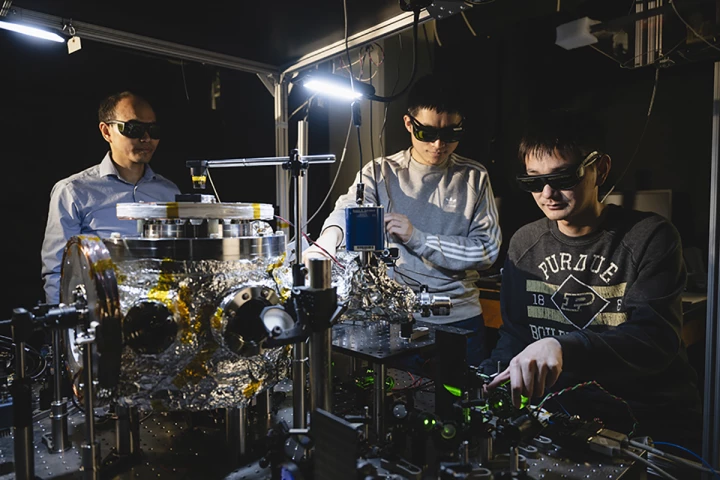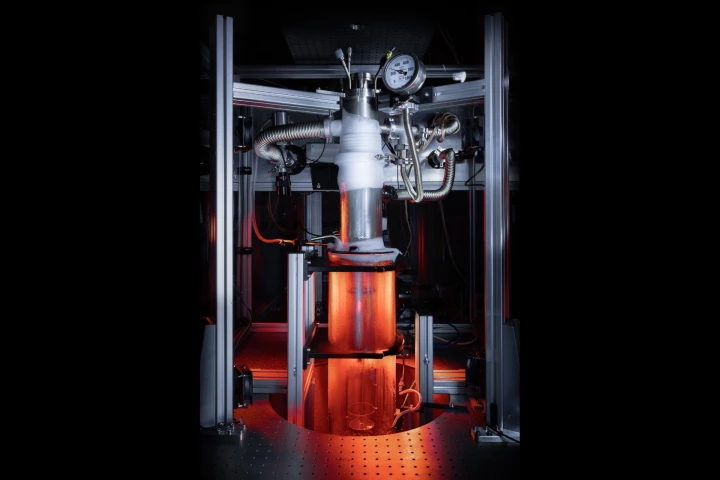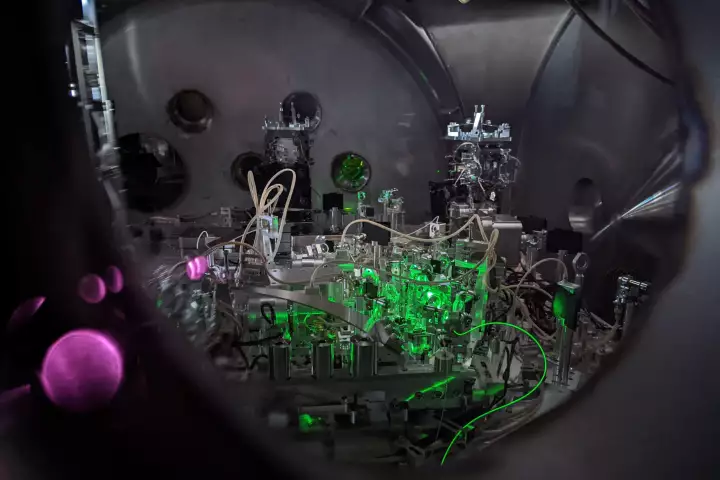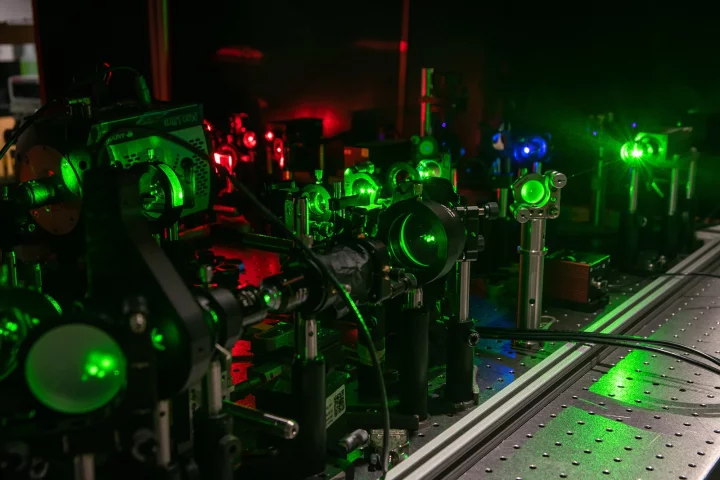Quantum Physics
-
Why have just one technological breakthrough when you can have two at the same time? The Royal Navy has installed for the first time a quantum clock into its XV Excalibur robotic submarine for extended precise underwater navigation.
-
Revolutionary technology is breaking out of the lab. The British government has announced that it is deploying a top-secret quantum clock, developed by the Defence Science and Technology Laboratory, across the military over the next five years.
-
Physicists have levitated nanoscale diamonds, hit them with lasers to make them flash and spun them at an incredible 1.2 billion rpm. The experiments aren’t just about creating the “world’s smallest disco” but could help the study of quantum physics.
-
"Imagine a swing that, once pushed, keeps swinging for almost 100 years because it loses almost no energy through the ropes." So says a Delft University of Technology researcher who has helped his team accomplish a parallel feat at the nanoscale.
-
Researchers have developed a transparent window coating that lets in visible light but blocks heat-producing UV and infrared, not only reducing room temperature but also cutting energy consumption related to cooling the space.
-
A giant quantum vortex has been created in superfluid helium in a lab at the University of Nottingham. Its behavior was found to mimic that of black holes and may help astrophysicists gain deeper insight into these galactic gravity gobblers.
-
The weak gravitational pull on a particle just half the mass of a grain of sand has been measured for the first time. This most precise measurement of its kind is a breakthrough towards the quantum realm and a potential Theory of Everything.
-
Causality is key to our experience of reality: dropping a glass, for example, causes it to smash, so it can’t smash before it’s dropped. But scientists have now demonstrated how that understanding of time can be violated to charge a quantum battery.
-
A unified Theory Of Everything is the holy grail of physics, but gravity refuses to play ball. A newly proposed theory attempts to unify Einstein’s theory of gravity with quantum mechanics – and importantly, outlines a way to test it experimentally.
-
Gravitational wave facilities measure spacetime distortions down to 10 quadrillionths of a hair – small enough for interference from particles popping in and out of existence. Now LIGO has pushed beyond this quantum limit by “squeezing” laser light.
-
Scientists have detected the first evidence of a phenomenon called “quantum superchemistry.” Long predicted but never confirmed, this effect could speed up chemical reactions, give scientists more control over them, and inform quantum computing.
-
Caltech scientists have created a quantum microscope that taps into the quirky quantum rules to see tiny details much more clearly. Using pairs of entangled photons allows the instrument to double the resolution of images without damaging the sample.
Load More











